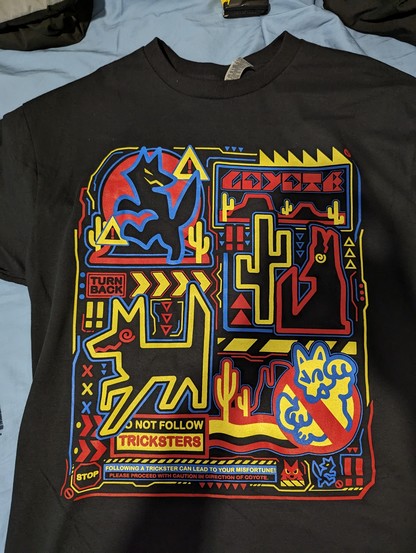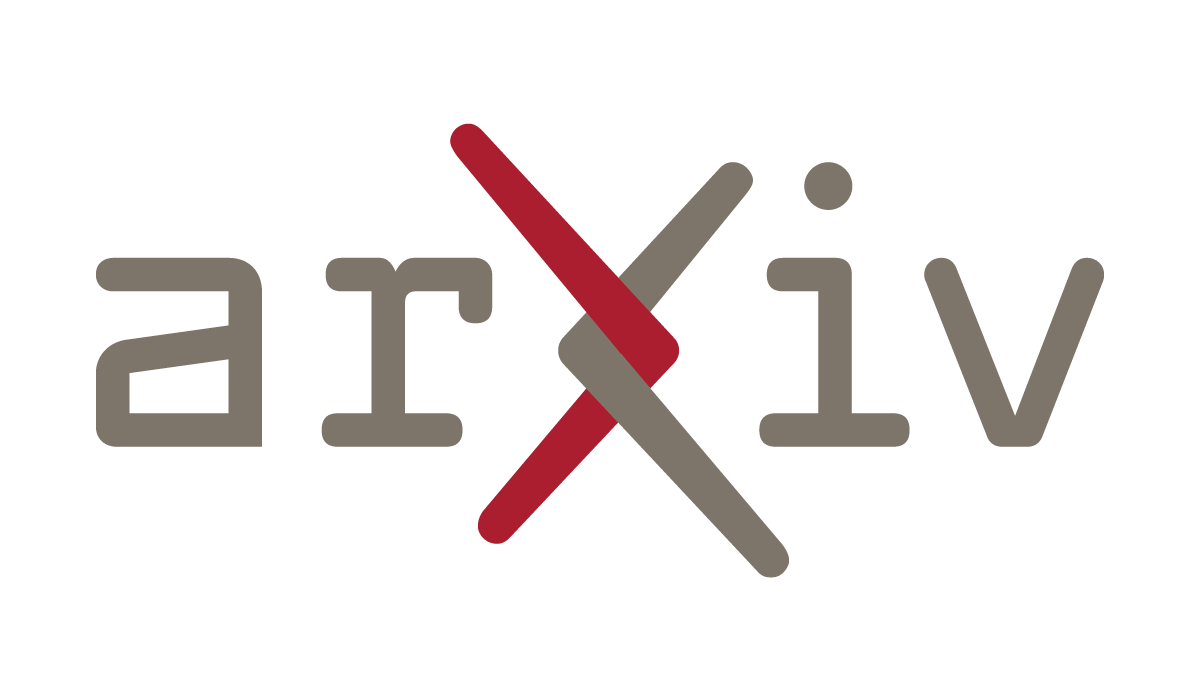2024-02-01 01:01:42
In an email to subscribers, Hulu says the company changed its subscriber agreement to bar sharing of accounts outside the user's household (Alex Weprin/The Hollywood Reporter)
https://www.hollywoodreporter.com/business
2024-02-01 00:32:57
In an email to subscribers, Hulu says the company changed its subscriber agreement to bar sharing of accounts outside the user's household (Alex Weprin/The Hollywood Reporter)
https://www.hollywoodreporter.com/business
2024-03-31 03:21:36
another thing I meant to toot earlier but forgot: this neon skrunklies shirt I got from https://howl-out.com
2024-04-01 06:55:33
Monitoring Wandering Behavior of Persons Suffering from Dementia Using BLE Based Localization System
Marcin Kolakowski, Bartosz Blachucki
https://arxiv.org/abs/2403.19704
2024-02-26 18:40:30
Dear mastodon.social, why are you hiding/limiting @…’s account?
Is it policy on mastodon.social to hide/limit pro-Palestinian / anti-genocide accounts?
(Someone there wanna check my account also, just in case?)
CC @…
2024-04-28 18:59:36
2024-02-22 14:06:04
For Security Teams Inside Organizations
Let’s take a deep dive into this piece of consumer messaging —
1958. American Football. A sports reporter bluntly asks coach Vince Lombardi “What are you going to change to turn this team around after a string of failures and losing seasons?”
His reply: “I am not going to change anything. We will use the same players, the same plays and the same training system. But we will concentrate on becoming brilliant at the basics.”
This is an incredibly motivating message. And it paid off!
In the next nine seasons, Coach Lombardi’s team, the Green Bay Packers, went on to win five NFL Championships and two Super Bowls.
The phrase “Brilliant At The Basics” found its way into popular culture, becoming a recurring theme.
And the graphic? For the general public, the lightbulb image = Good Idea.
Consumers are already familiar with these two concepts.
In Your Organization, You Define “The Basics”
Find the sweet spot between everything that’s possible and what your users are willing and able to do.
☑️ Ask yourself "What should our users know? What actions should they take?"
☑️ Define them clearly and give them a simple, catchy name — "The Basics."
☑️ Show your users "This Is How We Do It Here."
☑️ Let them know they can master The Basics.
☑️ Then let your users know there's More Where That Came From, if they're interested, but … The Basics are the focus.
We should deliver cybersecurity advice to non-technical people in bite-size, digestible pieces. Consumers hate feeling like they’re at the pointy end of a firehose. And they don’t like being lectured to. Let’s not overwhelm them. First lay a strong foundation, then line by line, concept by concept — build up from there.
My partner led consumer product development programs that sold $100M and $400M of consumer products every year. Now he develops consumer products for Pokémon. We have hard-won experience when it comes to speaking to and persuading consumers.
We want to share that with you.
Would you like to experiment with this messaging and these laptop stickers in your organization?
Three additional benefits for you:
☑️ Over time, if The Basics in your organization change, the graphics and the laptop stickers stay the same.
☑️ A campaign like this might help identify potential Cyber Champions in your organization.
☑️ The laptop stickers provide persistent visibility for Cybersecurity within your organization.
We’d be happy to send some free samples for you to try out with your users.
1.) Visit this Brilliant At The Basic page on our website: #BrilliantAtTheBasics
_________________
♻️ Please feel free to share this post and let others know about this offer.
2024-03-26 04:42:43
I've been reading "On Green” (https://joecarlsmith.com/2024/03/21/on-green) and its following article, “On Attunement” with some interest today. I am uninterested in the ways he is focused on “AGI”, but that might actually be part of what he's saying and missing.
They talk about the philosophy of green in the "magic the gathering" sense, which has five core modes of things, and being a game, designed to balance. It's an attractive system and not without merit as a philosophical labeling system. In short: white, moral; blue, knowledge and rationality; red, passion and desire; black, power and achievement. And green. Green is the subject they can't identify clearly.
I don't think they really understand green. (They come from a very rationalist place, and that's not a good mode to understand Green)
Green is the domain of systems thinking and of ecology. It's one of flexible boundaries and hierarchies that vanish when you look at them for long. They talk about philosophical agents and try to fit a green philosophical stance into that framework, but it misses: the very idea of a self is nebulous in a green philosophy. Yes, it obviously exists, we are all separate from each other. But also we are inseparable from each other. Green is a philosophy of relationality and multiple perspectives and ever shifting viewpoints. It's not just yin, passive, permissive, but holistic. It's not that it lets the Other in, it's that it actively is in relation with the Other. The other is the self, the self is the other.
The essays also label green as conservative, and this is not quite true. It is not about being slow or regressive or traditional, but about being whole. They can't quite see that green's willingness to accept death and pain as things that happen and also its strong preservationist stance are not opposed to each other. It seems incoherent, but it's not: death and pain are things that happen to living parts of an ecosystem. They matter, but so too does the whole matter. Where so many blue rationalists see statistical and demographic counts of deaths and "sentient beings harmed”, green sees a whole ecosystem where some of that is deeply natural. It's unnatural, ecosystem-harming deaths that are disasters in the green philosophy. Wholesale extinctions. Protracted, painful deaths, as much for the wound they cause outside the individual as the individual suffering as well. But we all come to an end, and to change that wholesale would end so many kinds of relationship, so many things.
Green revels in the illegible, the incomplete, and the connected. It's easy to be green-blind, to ignore the subtle systemic effects. So many of us want simple cause and effect, rather than action and plurality of reactions.
Green's ability to embrace the illegible lets it deal with Red chaos; its resilience tempers red passion. It can ally with White philosophies into a pastoral, conservative, moralistic framework. It ends up at odds with the rationalist Blue and the power-hungry Black, because they drive disequilibrium, but more than just transition to new stable ecologies, they drive systems permanently out of stability, destroying relationships in their path. When confronted with this, they will deny it because the objects are still there. Preserved. Catalogued. Legible and accounted for. Perhaps used instrumentally. Perhaps wrecked for some "greater purpose” but only acknowledged as objects. The relationships between things remain illegible.
2024-02-23 16:48:05
Kitten breaking change: Route handlers, etc., now take parameter objects
Just pushed the API updates I’d posted about earlier to main and to the latest Kitten release.
This change affects:
- Route handlers (all types of routes)
- `onConnect()` handlers
- The default export on main.script.js files
I’ve updated all the examples, documentation, etc., on Kitten to use the new API but if you see anything I’ve missed, please let me know.
2024-02-22 14:06:04
For Security Teams Inside Organizations
Let’s take a deep dive into this piece of consumer messaging —
1958. American Football. A sports reporter bluntly asks coach Vince Lombardi “What are you going to change to turn this team around after a string of failures and losing seasons?”
His reply: “I am not going to change anything. We will use the same players, the same plays and the same training system. But we will concentrate on becoming brilliant at the basics.”
This is an incredibly motivating message. And it paid off!
In the next nine seasons, Coach Lombardi’s team, the Green Bay Packers, went on to win five NFL Championships and two Super Bowls.
The phrase “Brilliant At The Basics” found its way into popular culture, becoming a recurring theme.
And the graphic? For the general public, the lightbulb image = Good Idea.
Consumers are already familiar with these two concepts.
In Your Organization, You Define “The Basics”
Find the sweet spot between everything that’s possible and what your users are willing and able to do.
☑️ Ask yourself "What should our users know? What actions should they take?"
☑️ Define them clearly and give them a simple, catchy name — "The Basics."
☑️ Show your users "This Is How We Do It Here."
☑️ Let them know they can master The Basics.
☑️ Then let your users know there's More Where That Came From, if they're interested, but … The Basics are the focus.
We should deliver cybersecurity advice to non-technical people in bite-size, digestible pieces. Consumers hate feeling like they’re at the pointy end of a firehose. And they don’t like being lectured to. Let’s not overwhelm them. First lay a strong foundation, then line by line, concept by concept — build up from there.
My partner led consumer product development programs that sold $100M and $400M of consumer products every year. Now he develops consumer products for Pokémon. We have hard-won experience when it comes to speaking to and persuading consumers.
We want to share that with you.
Would you like to experiment with this messaging and these laptop stickers in your organization?
Three additional benefits for you:
☑️ Over time, if The Basics in your organization change, the graphics and the laptop stickers stay the same.
☑️ A campaign like this might help identify potential Cyber Champions in your organization.
☑️ The laptop stickers provide persistent visibility for Cybersecurity within your organization.
We’d be happy to send some free samples for you to try out with your users.
1.) Visit this Brilliant At The Basic page on our website: #BrilliantAtTheBasics
_________________
♻️ Please feel free to share this post and let others know about this offer.








